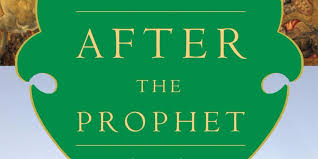Written by: Aneela Habib,
By Lesley Hazelton,
We are living in an era where our daily life is being bombarded with Shia Sunni conflicts. The Muslim world we see today was not always like this. Before the words Shia and Sunni came into existence there were only Muslims, just true Muslims. Our daily life is so much affected by these sectarian differences but still most of us do not even know the root cause of this sectarian division. But with the passage of time, lay man asked several questions regarding this division and tried to find out the real reasons behind the huge gulf between these two major sects of Islam. But for those people who are Non-Muslims, it is very hard for them to understand this dilemma as most of the Muslims could not make them understandwhichcircumstances led us to the present sectarian differences.
They told different versions of the same story, disagreeing not on what had taken place in the seventh century but on what it meant. (Hazelton, 2009)
Reading the Lesley Hazelton’s after the Prophet it brings you to the new horizon of the history by giving the detail of every little incident that caused a major conflict resulted into a huge gulf between the Muslims. The very history book gives the taste of theology as well, but one thing should be noted that the very book does not persuade the reader to take the either side of the Muslim’s major sects whether the reader is Sunni or Shia. Moreover if you are a Muslim or not the book gives you a complete insight of the history specially what happened after the death of the last messenger Holy Prophet Hazrat Muhammad (SAW). Hazelton, though highlighted such differences that lead to the basic conflict and caused major incidents likes Karbala, but still, the religious scholars on the both sides, try to bring the both sides closer.
Before going for this it should be kept in mind, there are certain things and incidents which may not be agreeable according to your faith and sect. For Example Hazelton narrated the Incident of the Door, which would not be suitable according to the teachings of Sunni Muslims. On the other hand, Hazelton narrated the War of Saffin, and claimed that Hazrat Imam was annoyed by the decision of his father Hazrat Ali, and he would not forgive his father for that deadly war, would not be acceptable for Shia Muslims. These incidents narrated by Hazelton shows that she has done her research superbly. It is quite obvious that she used credible resources and her bibliography is the proof of her hard work and excellent research in field of Islamic theology.
“The Last Prophet” by Lesley Hazelton is divided into three major parts, named as Muhammad, Ali and Hussain. The most interesting thing and it could be controversial as well that Hazrat Ayesha is the mouth piece of the writer in all three chapters. The story revolves around Hazrat Ayesha (R.A) the most favorite wife of the Holy Prophet Hazrat Muhammad (SAW). It seems that Hazelton is pretty impressed by Hazrat Ayesha. The very writer highlighted the controversial decisions of Hazrat Ayesha (R.A) in a manner that it appears as she is fascinated by the personality of Hazrat Ayesha (R.A). Hazelton also described the cunning personality of Muawiyah and his conflicts with Hazrat Ali (R.A) as well.
The beauty of the book is increased by the writing style of Hazelton. The ways she has described the incident, reader takes himself to that time period and imagines that the whole incident was being happening before his/her eyes. The narrative style of “Pen and Pencil” incident takes the reader to the death bed of Hazrat Muhammad (SAW) where he/she can witness the raising arguments among the Muslims. In “Battle of Camels” one can imagine the destruction of Muslims by each other’s hand.
She is not a Muslim but she covered the historical events in well professional manners. Besides writing this book, if we look at her qualifications and listen to her lectures and speeches that she delivered on different platform, it becomes evident that she knows more than an ordinary Muslim. She has narrated the various incidents and traditions of Muslims which may be unfamiliar to many ordinary Muslims. By reading this book one can develop a thought about Hazelton that she has vast knowledge about the Shia- Sunni split. It is really amazing that she has brought the incidents into discussion that were happened some 1400 years ago, but their fragrance is still fresh in the words of Hazelton. Moreover the way she narrated the Karbala incident and mentions the Karbala bomb blast 2004, it gives us the complete insight into history. She narrated the day of Ashura in a style that every lover of Husain whether he is Shia or Sunni would shed a tear by imagining the brutality done by the fellow Muslims.
If you are a Muslim, the very book can give you a new perspective to read and understand the basic shia-sunni conflict. You can find the new details which were not known to you before. But if you are a non-Muslim it can provide you the base to understand the current gulf of hate and opposition between the two major sects of Islam. However, to get more benefit from this book it would be better to consult the religious scholar to go the more detail of each and every incident. Overall, the book is well written with vivid imagery. It may not be a must read book but it is certainly the book one should read.

